What Do the New Learning Forward PD Standards Mean for You?
NOVEMBER 7, 2022
Learning Forward revised their standards for teacher professional development in April 2022. The new Standards for Professional Learning continue the organization’s focus on the content, process and context of professional learning, with a renewed emphasis on equity, leadership and instruction. What’s new in the 2022 standards? And how might they change professional development planning for schools and districts?
What Are the Standards for Professional Learning, and Why Do They Matter?
Learning Forward (formerly the National Staff Development Council) established the first set of national standards for teacher professional development in 1994. The nonprofit was established to promote research-based professional learning approaches that translate to real changes in classroom practice and, ultimately, student outcomes. The standards have been revised over the years, most recently in 2011. The 2022 revision reflects recent research and emerging needs and priorities for students and teachers.
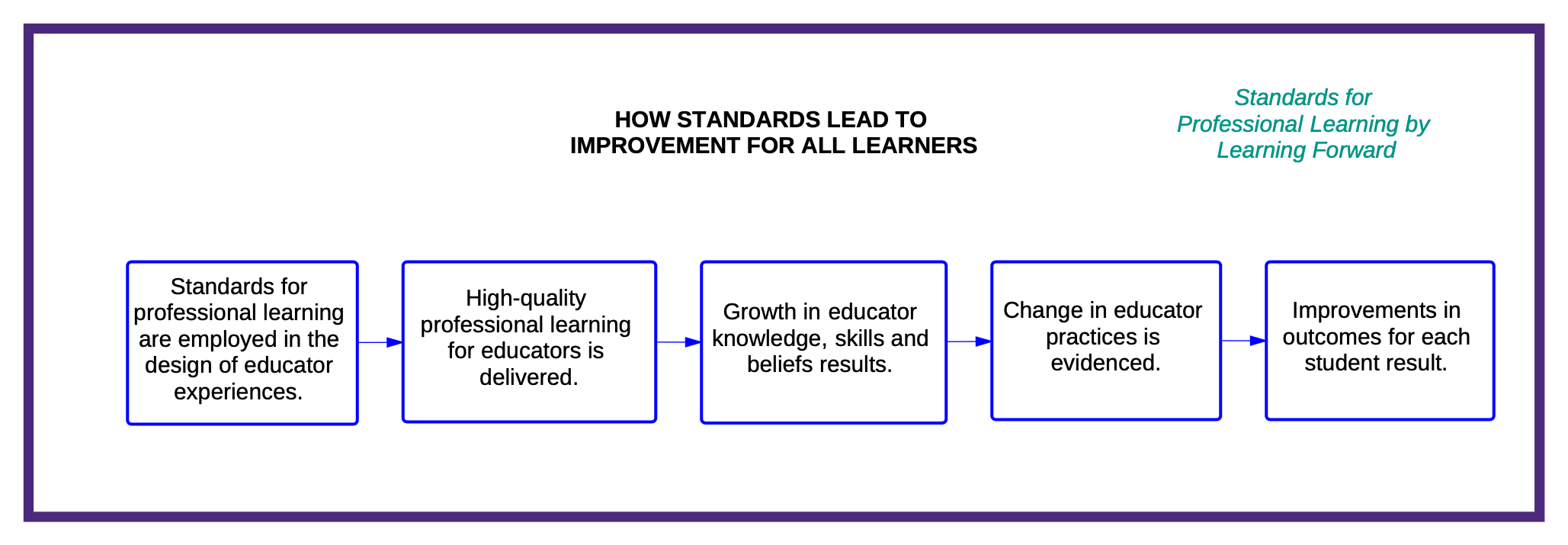
The Standards for Professional Learning were developed to address a significant problem: namely, that most professional development failed to change teacher practices and student outcomes. It has been repeatedly shown that one-time “stand-and-deliver” style professional development has limited, if any, impact on teacher knowledge, skills and practices. To be effective, teacher professional learning must be embedded as part of a continuous culture of learning that includes theory, modeling, applied practice, and coaching. The most effective professional development models are ongoing, sustained and job-embedded.
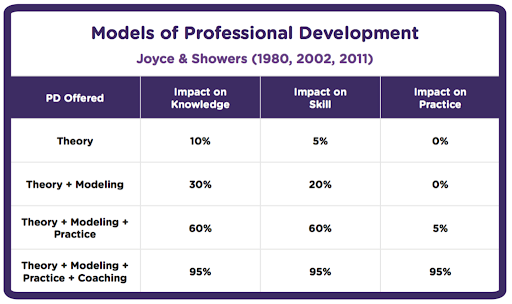
Learning Forward also recognized that effective professional learning must be grounded in the needs of students. Professional development should focus on programs and classroom strategies that are research-based and aligned with the skills and curriculum that must be taught. The focus is not simply on imparting new skills and strategies to teachers, but on how those skills and strategies will impact student learning outcomes. Effective professional development raises the capacity for teachers to meet the learning needs of all students.
The 2022 Learning Forward Standards for Professional Learning
The new Learning Forward standards build on the previous versions with an emphasis on student-centered content and high-quality, research-based practices for adult learning. At the same time, they have strengthened their focus on equity, leadership, and curriculum, assessment and instruction.
The 11 standards are divided into three strands.
- Rigorous Content for Each Learner: How the essential content for educators will lead to improved student outcomes.
- Transformational Processes: How professional learning is structured to sustain significant changes in knowledge, skills, practices, and mindsets.
- Conditions for Success: The context in which professional learning takes place, including leadership support, school culture, and resource allocation.
Within each strand, specific standards are organized around the guiding prompt: “Professional learning results in equitable and excellent outcomes for all students when educators…” This “outcome first” approach keeps the focus squarely on the end goal: improving equity and academic outcomes for all students.
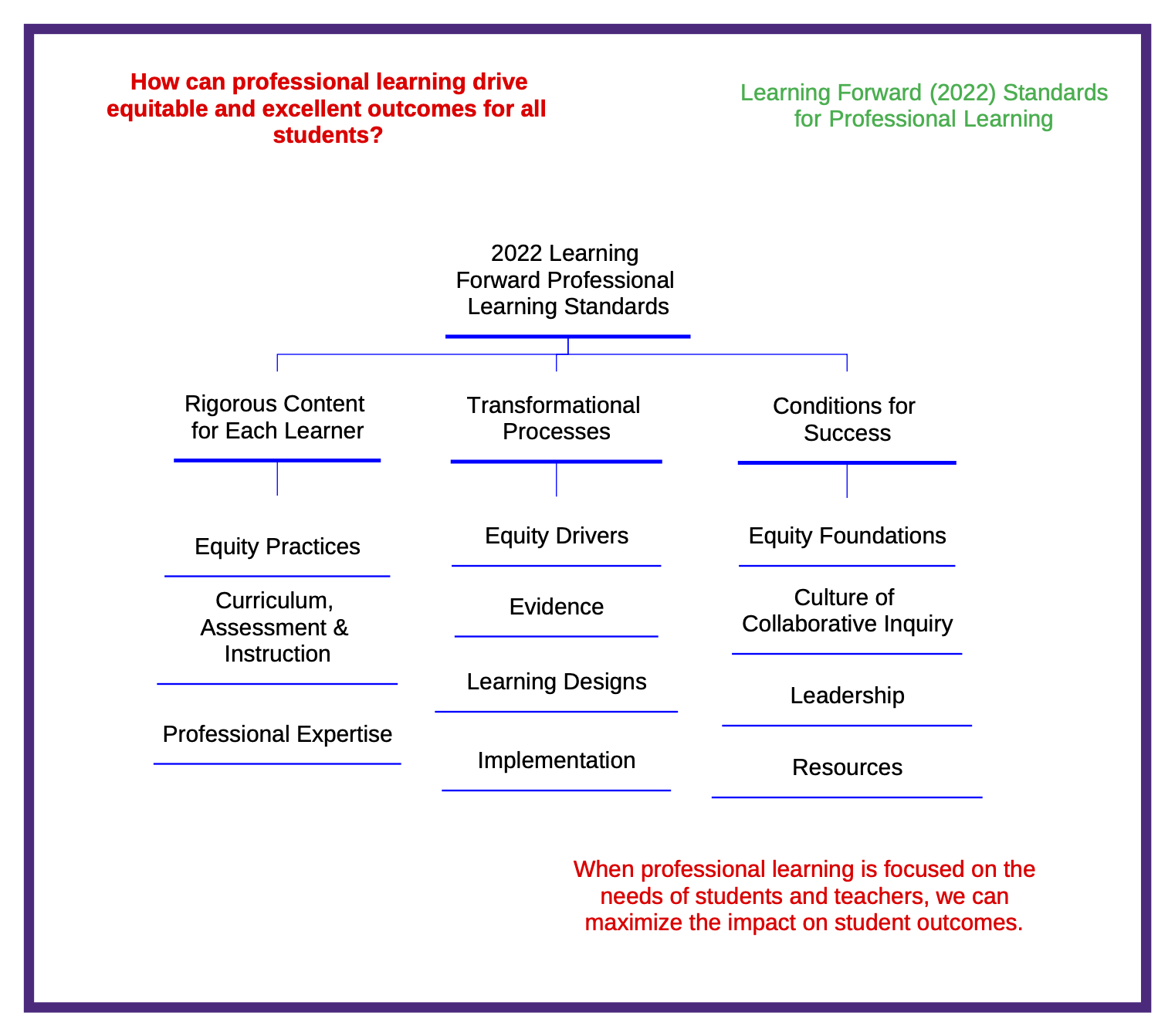
Using the Professional Learning Standards to Drive Transformational Change
What does this mean for schools and districts? The standards challenge school and district leaders to take a strategic and systematic approach to planning professional development experiences for students. Some questions educations leaders may want to ask include:
- What are the student needs that we most need to address at this time? What are our goals for the training?
- What practices, strategies or programs will we use to address these needs? How will they help us meet our goals?
- What do we want teachers to know and do as a result of training? What changes do we want to see in classroom practice?
- What kind of training and support do teachers need to make these changes successfully? What resources are needed?
- How will we know if training has been successful? How will we measure the impact on student performance?
Successful transformative change is not a one-time process but a cycle, which we call the Four-Part Learning Cycle. The learning cycle is an ongoing, systematic process that helps teachers move from learning to successful classroom application. Ongoing coaching and self- and peer assessment give teachers the feedback they need to make adjustments in their practice and identify additional professional learning needs. This approach builds strong professional learning communities within a culture of continuous improvement. It is also highly focused on student needs and outcomes.
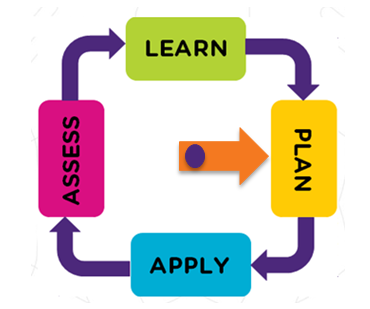
The ongoing, spiraling process may look something like this:
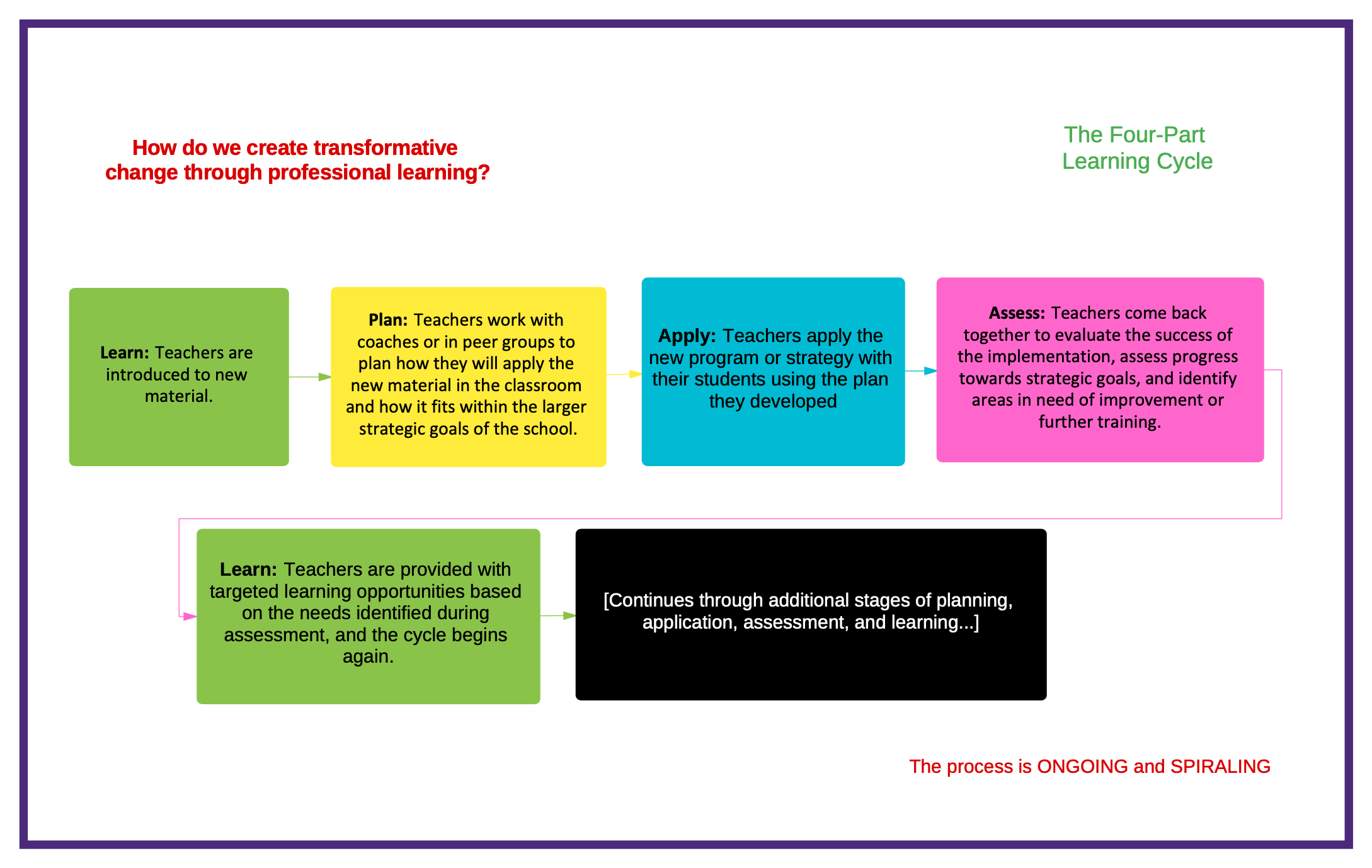
Thinking Maps and the New Standards for Professional Learning
At Thinking Maps, our focus has always been on creating high-quality, impactful professional learning experiences grounded in brain-based classroom practices. Our training model and rollout plan were designed using best practices in adult learning to maximize their impact and produce lasting, transformative change. And teachers have access to ongoing support and continued learning through the Thinking Maps Learning Community (TMLC).
To see how Thinking Maps strategies and training support the Learning Forward standards, download the alignment.
We’re also digging deeper into the new standards in Navigator, only for TMLC subscribers. The October, November and December Navigator series focus on the three big strands from the standards.
- October: Rigorous Content for Each Learner
- November: Transformational Processes
- December: Conditions for Success (coming soon!)
If you’re not a TMLC subscriber, contact your Thinking Maps representative to get started.
Continue Reading
September 14, 2023
Reading comprehension is the foundation for academic success across all subject areas. And yet, many students still struggle to engage deeply with written content and pull meaning from complex text. Here’s how teachers can support development of “deep cognitive structures” for reading comprehension that reduce the cognitive load so students can focus on content.
June 15, 2023
Both Thinking Maps and graphic organizers present information visually. But only Thinking Maps are aligned with the way the brain prefers to process information.
April 12, 2023
Asking better questions is an important component of critical thinking. Learn how to go beyond the "Five Ws" to ask questions that promote higher-order thinking.
February 13, 2023
What keeps teachers in the classroom? When teachers have the tools, resources, and training they need to be successful, job satisfaction soars—and so do student achievement rates.